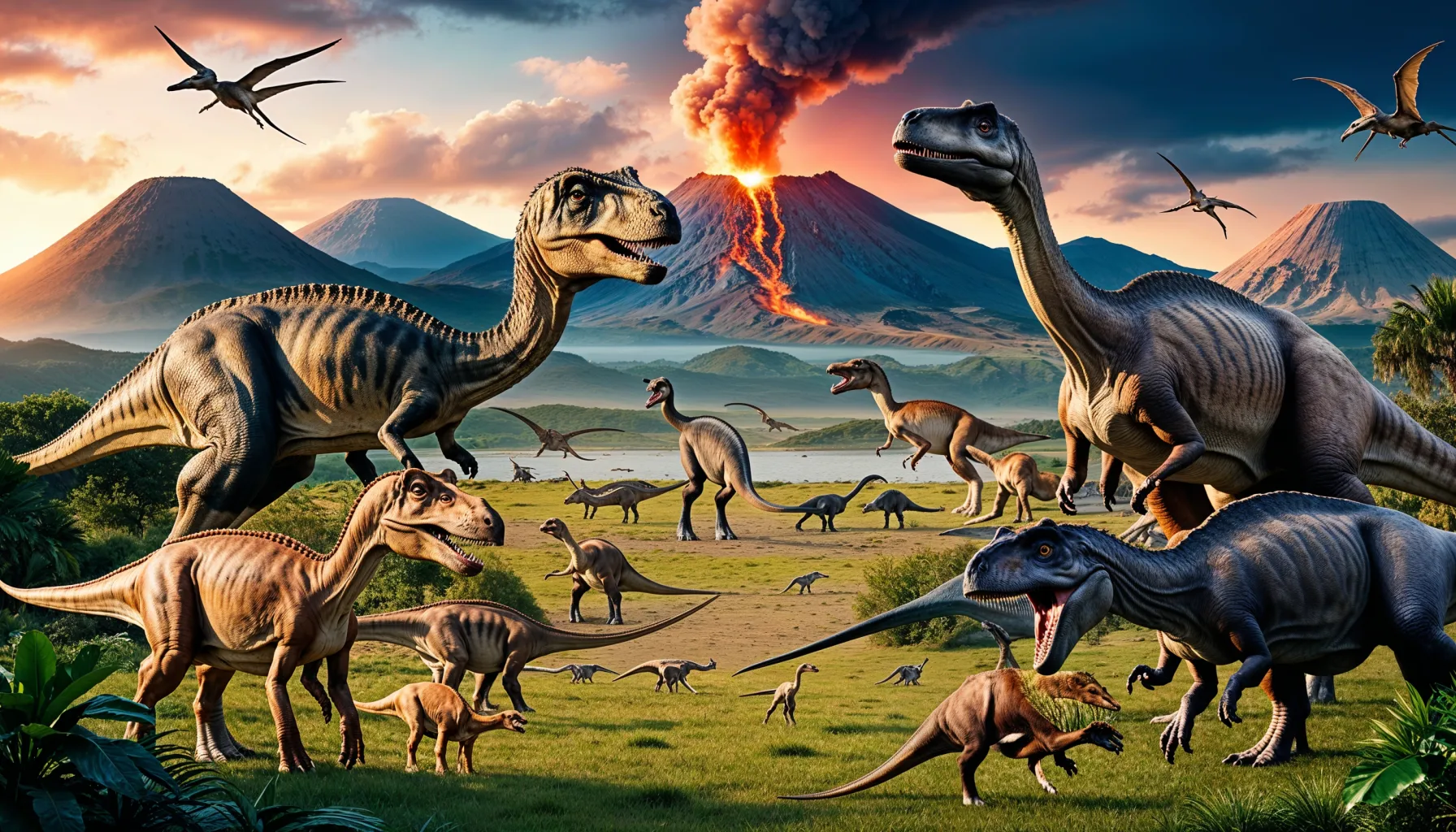Triassic Age: The beginnings of the dinosaurs
It was during this time that the first dinosaur species emerged, living in a world recovering from the Permian-Triassic mass extinction. Find out more about this fascinating era and its unique creatures here.
Evolution of the first dinosaurs
The development of the first dinosaurs in the Triassic period represents a turning point in the history of the earth. After the devastating Permian-Triassic mass extinction, which wiped out almost 90% of all species, the changed environmental conditions provided ideal conditions for the emergence of new life forms. The early dinosaurs were small and inconspicuous compared to their later relatives, but already showed remarkable adaptive abilities. These early species included the Eoraptor and the Herrerasaurus, which were characterized by their bipedal locomotion and versatile diet. Their development laid the foundation for the diversification and dominance of dinosaurs in the following eons.
Habitat and climate in the Triassic
The Triassic period was characterized by a highly variable climate and diverse habitats. The early Triassic experienced extreme desert conditions, while later wetter and warmer climates emerged. These climatic variations led to a variety of habitats, from lush forests to dry deserts. This diversity of environments was crucial for the evolutionary adaptation and diversification of dinosaurs. The flora of this period consisted mainly of ferns, gymnosperms and the first conifers, which in turn formed the food base for many dinosaur species. The diverse ecosystems of the Triassic period thus provided an ideal stage for the emergence and evolution of dinosaurs.
Important Triassic dinosaurs
During the Triassic period, some of the earliest and most basic dinosaur species appeared. Outstanding representatives of this era were Plateosaurus, an early sauropodomorph known for its size and herbivorous lifestyle, and Coelophysis, a slender, agile carnivore. These species illustrate the diversity and adaptability of early dinosaurs. Plateosaurus, often considered one of the first “true” dinosaurs, was a precursor to the giant sauropods of the Jurassic and Cretaceous periods. Coelophysis, in turn, provided insights into the development of the fast, bipedal predators that became prominent later in dinosaur evolution. These and other Triassic dinosaurs laid the foundation for the later diversity and complexity of the dinosaur world.
Plants and animals next to the dinosaurs
The plant and animal world of the Triassic period was just as diverse as that of the dinosaurs themselves. The flora was dominated by ferns, seed ferns and the first conifers, which fulfilled important ecosystem functions and served as a source of food. In addition to dinosaurs, other reptiles such as the first true crocodiles and marine reptiles such as ichthyosaurs and plesiosaurs populated the earth and oceans. Amphibians and early mammals were also part of this diverse biota. This coexistence of different life forms demonstrates the ecological dynamics of the Triassic and the increasing complexity of life forms that paved the way for the later evolution of the animal world.
The end of the Triassic and the transition to the Jurassic
The end of the Triassic period was marked by another major mass extinction that took place around 201 million years ago. This extinction occurred during the transitional phase between the Triassic and Jurassic and affected numerous marine and terrestrial animals, including many species of amphibians and early reptiles. The exact causes of this extinction wave are still the subject of scientific research, with volcanic activity and climate change being discussed as possible factors. For the dinosaurs, however, this event represented an opportunity: the extinction of many competitors opened up new ecological niches, which they were able to successfully occupy in the subsequent Jurassic period. The end of the Triassic thus marked a turning point that heralded the rise of the dinosaurs to become the dominant animal group on Earth.
Continue to the Jurassic Age
